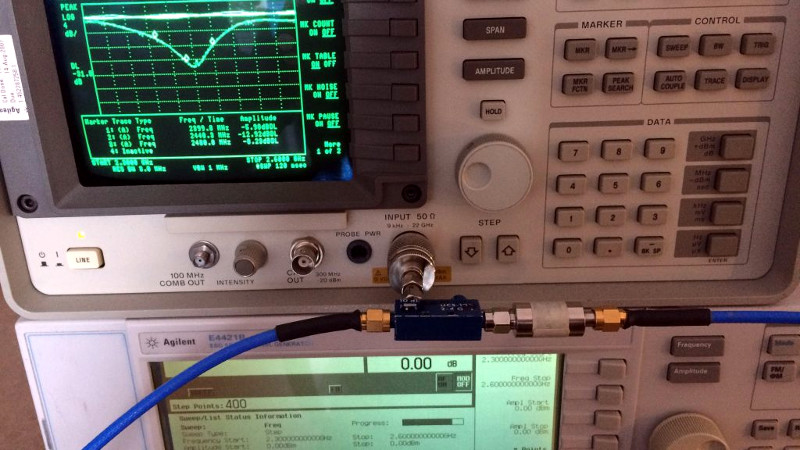Any grizzled electronic engineer will tell you that RF work is hard. Maintaining impedance matching may be a case of cutting wires to length at lower frequencies, but into the low centimetre and millimetre wavelengths it becomes a Dark Art aided by mysterious and hugely expensive test equipment beyond the reach of mere mortals. A vector network analyser or VNA may be beyond the reach of many, but [Tomasz Wątorowski] is here to tell us about how with some resistors, mathematics, and a bit of lateral thinking its functions may be replicated with a more modestly equipped bench.
It’s not a method for the faint-hearted as the mathematics are of the variety that you probably learned as an undergraduate but let slip from your memory with thanks after the course ended. The method involves measuring the return loss both with and without a resistor of known value in series with the antenna, these figures allow the real and imaginary components of the antenna’s impedance to be calculated. There is a further piece of work though, this method doesn’t determine whether the antenna is capacitive or inductive. Repeating the measurement with either a capacitive or inductive matching network allows this to be determined, and the value of the appropriate matching component to be calculated.
If you are interested in this kind of work, start with a primer on RF design.
Complex impedance matching using scalar measurements, math and resistors

















“It’s not a method for the faint-hearted as the mathematics are of the variety that you probably learned as an undergraduate but let slip from your memory with thanks after the course ended. ”
But…but…we’re engineers! :-D
solving maths is a job for the computer!
Around equation 3, variables a nd b become x and y because – reasons?
Excuses for that have certainly slipped from my memory.
It’s some kind of Elvish… I can’t read it :D
There are few who can. The language is that of Mordor, which I will not utter here.
Impedence is the resistance to spell checking.
Please, check your impedances.
Impedence is the resistance to spell checking.
Please, check your impedances.
Note to self:
Show more sympathy and less impudence.
Nope, stick to your guns… professionals in media should pay attention to spelling, grammar and quality-assurance concepts like proofreading.
But which ‘English speaking’ countries spelling?
Take a look at the nanoVNA. $35 delivered from China 70 KHz to 900 MHz.
Damned Aussies and their insistance of 915MHz Lora.
I needed one though and paid a lot more for something more capable… still from china.
Don’t blame me, mate – I stick mostly to HF. Microwaves, microstrip and stripline use voodoo, or math [which is worse]. Even 433MHz is pushing my comfort zone.
SOTA (School Of The Air) has moved to satellite / broadband IDL (Interactive Distance Learning) – but HF is still my favorite.